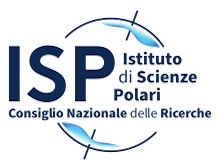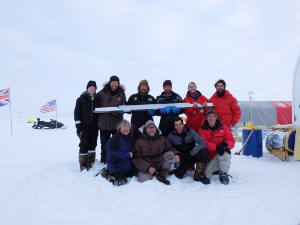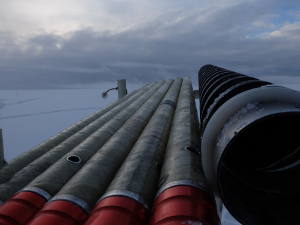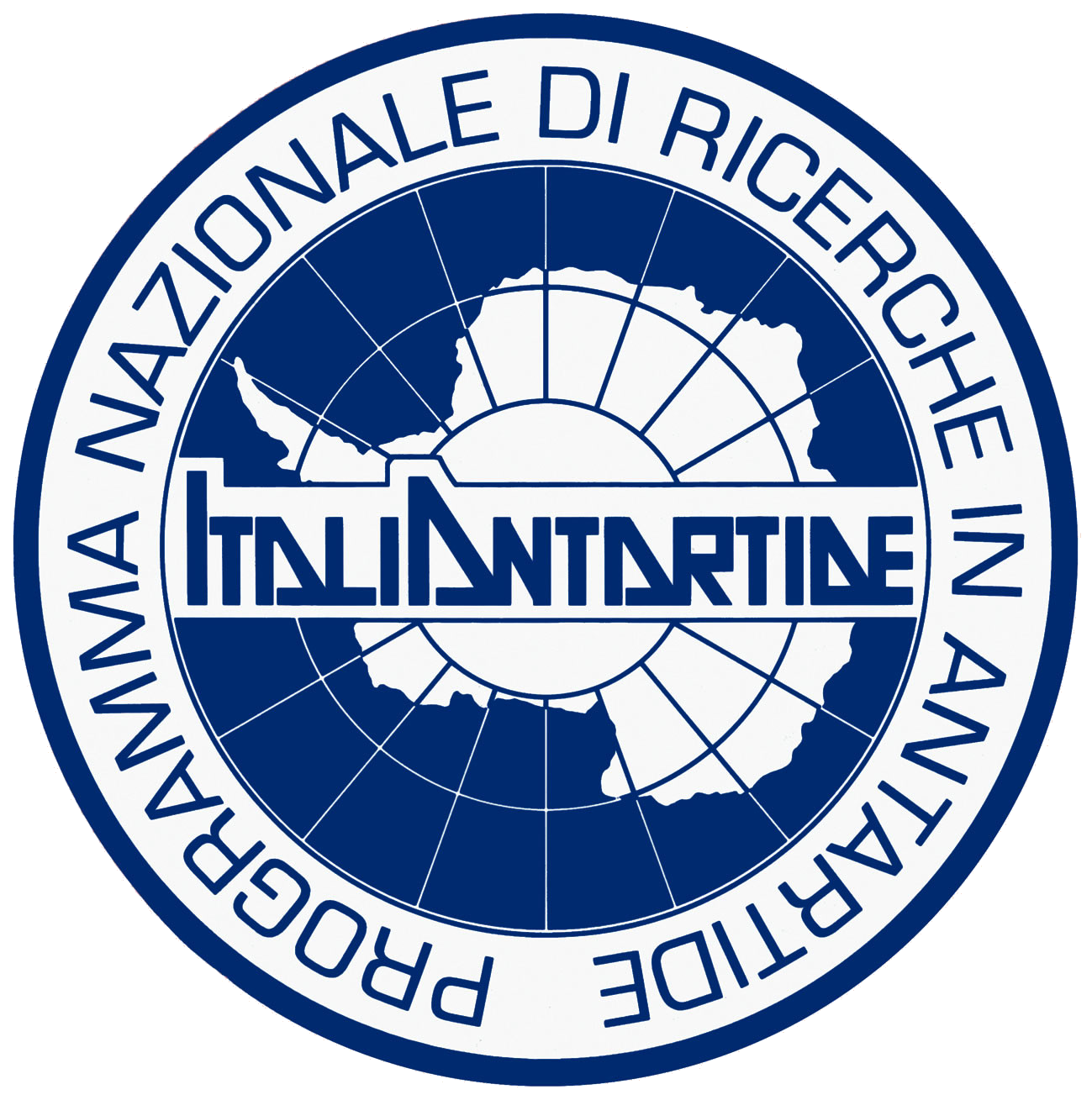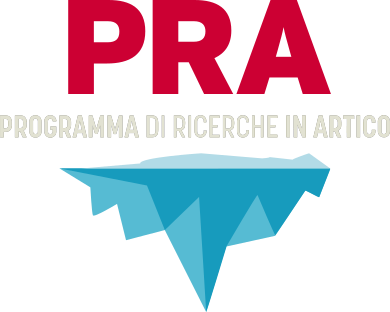The research is part of the ERC Synergy project ice2ice What if Arctic Sea ice disappears? The study has combined state-of-the-art global climate-chemistry models and geochemical analyses from two Greenlandic ice cores, drilled in 2011 and 2015. During these campaigns, several kilometers of ice were obtained that have preserved the climatic history of our planet during the last 127,000 years, including the whole last cold period: the “Last Glacial Cycle”. The ice layers are so important for paleoclimatology: they are metaphorically like the pages of a history book, recording the different environmental changes that have been occurring over the last decades, centuries and millennia.
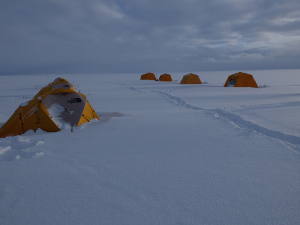 The analysis of the halogens contained in the ice, together with the concentrations of other elements such as calcium or sodium, has revealed how the ocean is the great regulator of iodine in the Arctic atmosphere, the variability of this element being fundamentally controlled by the dynamics of the ice pack and by the biological productivity of the oceans. This study shows us for the first time how iodine levels were much higher in warmer periods of the past compared to the current one, which helps us to foresee possible future scenarios in the atmospheric concentration of this element in the coming future. Iodine has an influence on climate because it is an efficient ozone destroyer and contributes to the formation of aerosols, which reflect solar radiation.
The analysis of the halogens contained in the ice, together with the concentrations of other elements such as calcium or sodium, has revealed how the ocean is the great regulator of iodine in the Arctic atmosphere, the variability of this element being fundamentally controlled by the dynamics of the ice pack and by the biological productivity of the oceans. This study shows us for the first time how iodine levels were much higher in warmer periods of the past compared to the current one, which helps us to foresee possible future scenarios in the atmospheric concentration of this element in the coming future. Iodine has an influence on climate because it is an efficient ozone destroyer and contributes to the formation of aerosols, which reflect solar radiation. 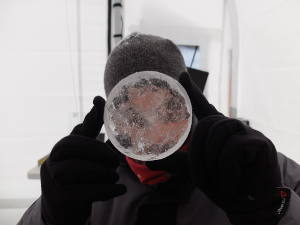 As a result, the concentration of this element can potentially influence climate: we have observed how the amounts of iodine in the atmosphere have varied proportionally to the magnitude of the rapid climatic changes that have occurred in the past. In the context of global warming that we live today, the added human pressure on the environment may lead us to reach levels of atmospheric iodine in the near future that have never been seen during the last 127,000 years.
As a result, the concentration of this element can potentially influence climate: we have observed how the amounts of iodine in the atmosphere have varied proportionally to the magnitude of the rapid climatic changes that have occurred in the past. In the context of global warming that we live today, the added human pressure on the environment may lead us to reach levels of atmospheric iodine in the near future that have never been seen during the last 127,000 years.
Contact person: Niccolò Maffezzoli, Marie Curie fellow at Ca’ Foscari University of Venice, and Andrea Spolaor, CNR-ISP
Juan Pablo Corella, Niccolo Maffezzoli, Andrea Spolaor, Paul Vallelonga, Carlos A. Cuevas, Federico Scoto, Juliane Müller, Bo Vinther, Helle A. Kjær, Giulio Cozzi, Ross Edwards, Carlo Barbante and Alfonso Saiz-Lopez. Climate changes modulated the history of Arctic iodine during the Last Glacial Cycle. Nat Commun 13, 88 (2022). DOI:10.1038/s41467-021-27642-5
